ZİNGA BAYİİ, zinga bayi, zinga bayisi, zinga boya toptan, zinga toptan, zinga boya,zinga boya toptancıları, kelimelerinde googledan ulaşabileceğiniz boya satış firmamız Ersan boya / ZİNGA metal boyasını en uygun fiyatla satmaktadır. Lütfen fiyat alınız.
• ZINGA’nın uygulanması boya kadar kolaydır
Aynen boya gibi, ZINGA kolayca fırça, rulo veya püskürtme tabanca ile uygulanabilir. ZINGA uygulaması kötü hava koşullarında dahi yapılabilir.
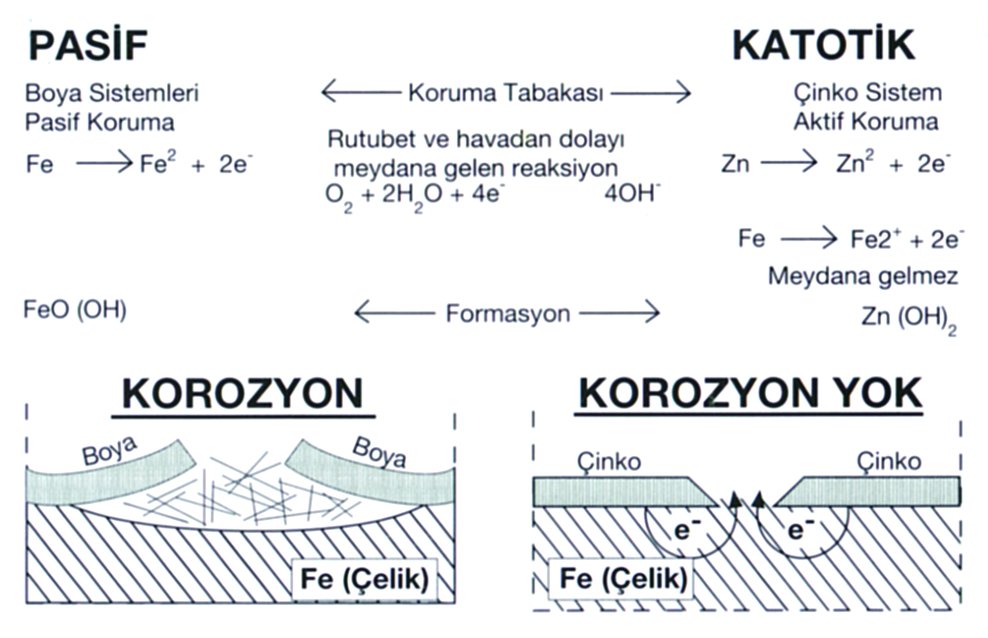 • ZINGA hem katodik koruma hem de bariyer koruma sağlar
• ZINGA hem katodik koruma hem de bariyer koruma sağlar
Paslanmaya karşı kullanılan ve çinko bakımından zengin oldukları söylenen boyalar uygulanan yüzeyin hava ile temasını önler ve bir süre yüzeyi korur. Ancak, bu boyalar tüm tabaka yüzeyinde korumayı sağlayacak yeterli çinko içermediklerinden bir süre sonra koruyucu özelliklerini kaybederler ve pas, boya tabakasının altına sızarak pullanma ve çapaklanma meydana getirerek yüzeye zarar vermeye başlar. Buna karşın, Zinga, içindeki saf çinko miktarı çok yüksek olduğundan, metal yüzeye tamamen nüfuz eder ve katodik koruma sağlayarak yüzeyin paslanmasına olanak vermez. Çinko tabakasının hafifçe hasara uğradığı yerlerde bile metal yüzeyin paslanması mümkün değildir.
Ayrıca zinga pasif koruma da sağlar. ZINGA oksitlenirken yüzeyde yavaş yavaş çinko tuzları oluşur ve bir koruyucu bariyer meydana getirir. Bunun yanında, ZINGA’daki bağlayıcı, ikinci bir koruma tabakası sunmakta ve çinkonun yitirimini azaltmaktadır.
 • ZINGA özel püskürtme çinko’ya dayanmaktadır
• ZINGA özel püskürtme çinko’ya dayanmaktadır
ZINGA’nın performansının temelinde yatan sadece kuru yüzeyde ihtiva edilen çinko miktarı değildir. Kullanılan çinko kalitesi de çok önemlidir. ZINGA’da kullanılan çinko özel püskürtme yöntemi ile üretilir, ve zinganın benzersiz vasıflarını ve saflığını sağlayan da budur. Ayrıca çinko tanecikleri özel olarak şekillendirilerek temas yüzeyleri arttırılmış ve birbirine daha iyi bağlanmaları sağlanmıştır. Bu da ZINGA’yı benzersiz kılan sebeplerden bir diğeridir.
• ZINGA mekanik zararlara karşı daha direnşlidir
ZINGA boyadan daha esnektir.Metalık tabaka olduğu için kapladığı metal ile aynı tepkimeyi verir. Sıcaklık farklılıkları karşısında uzayıp kısalır ve mekanik hasarlar karşısında çatlamaz.Esnekliği dolayısıyla ezilebilir ve sıkıştırılabilir. Diğer taraftan boya kolayca çatlar ve pas boya tabakasının altına sızar.
ZINGA ile sıcak daldırma galvanizin ve metalizasyonun karşılaştırılması
• ZINGA için kolay yüzey hazırlığı
Sıcak daldırma galvaniz uygulanmadan önce çelik yüzeyin kimyasal çözeltiler ile değişik yıkama işlemlerinden geçirilmesi gerekir.
Metalizasyon için gereken yüzey hazırlığı oldukça zahmetlidir. Grit ile SA 3 temizlik derecesinin elde edilmesi gerekir. Tahrip olmus yüzeyin son derece kuru olması gerekir.
Ayrıca pürüzlük derecesi de son derece önemlidir.Çinko uygulaması tahribatın hemen ardından yapılmalıdır.
Diğer taraftan ZINGA, SA 2.5 temizlik derecesi ve Ra 12.5 ila 15 μm pürüzlük derecesi ile hatta nemli havada yüzeye uygulanabilir. Tahribat ve ZINGA uygulaması arasında birkaç gün geçmiş olabilir.Herzaman ilk olarak metalin gritlenmesi gerekmez. Bazı durumlarda yüzey hazırlıkları minimuma indirgenebilir. ZINGA temiz, pürtüklü, hatta paslı ve nemli yüzeye uygulanabilir.
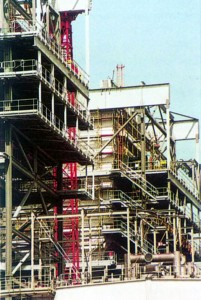 • ZINGA ile kolay uygulama
• ZINGA ile kolay uygulama
Sıcak daldırma yöntemi ile galvanizleme yüzeyin parçalara ayrılması, özel gereçlerle atölyeye taşınması, ısıtılması, tekrar kaynak yapılması, parçaların yeniden birleştirilmesi v.s. gibi işlemler içermektadir.
Diğer taraftan, ZINGA’nın uygulaması çok basittir. ZINGA fırça, rulo veya püskürtme tabanca ile kolayca uygulanabilir. Atölyelerde bulunan özel ve komplike gereçlere ihtiyaç yoktur. ZINGA yerinde uygulanabilir. Yapının parçalanıp atölyeye taşınması gerekmez. Bunun ne kadar çok para ve zaman tasarrufu sağladığını söylememize lüzum yok. Üretim sürecinde ve tadilat esnasında bütün kontrol ve yönetim sizdedir.
ZINGA kötü hava koşullarında dahi uygulanabilir. Eskiden beri süregelen galvanizleme metodları bu avantajı sunmuyor.
ZINGA ayrıca daldırma yöntemi ile de uygulanabilir.Hatta daldırma işlemi değişen ısı derecelerinde dahi yapılabilir. ZINGA’yı ısıtırken enerji kaybı oluşmaz. Sıcak daldırma galvaniz için 620oC’nin üzerinde ısı gerekir, bu da ince yapılarda deformasyona sebep olabilir. ZINGA ile herhangi metal yapıyı galvanizlemek mümkündür. Sıcak daldırma yöntemi için gereken uygun koşullar ZINGA için aranmamaktadır.
• ZINGA daha iyi katodik koruma ve ekstra bariyer koruma sunmaktadır
ZINGA haddi zatında diğer mevcut anti-korozyon sistemlerden daha fazla etkilidir. ZINGA’nın üstünlüğü, kuru tabakada içerdiği çinkonun kalitesi ve miktarından kaynaklanmaktadır.
ZINGA’nın polimerize tabakası, sıcak daldırma gavanizin tabakasından tamamen farklıdır. Sıcak daldırma galvaniz tabakası, %98 saflık derecesindeki değişken çinko konsantrasyonu (%75 ila %85) ile alaşım dizisinden meydana gelmiştir. Oysa ZINGA tabakası homojendir ve en az %96 çinkodan (%99,995’e kadar saf) meydana gelmiştir. Ayrıca ZINGA içerisindeki çinko parçacıkları, ZINGA’da bulunan tutkal tarafından korunmaktadır. Bu özel reçine galvanik çiftlerin oluşumuna izin vermektedir, ayrıca ekstra koruma da sağlamaktadır.
ZINGA metali pasa karşı iki şekilde korumaktadır: Yüksek çinko içeriğinden dolayı aktif, katodik, galvanik koruma ve yüzeydeki çinko tozlarından dolayı ve içerisindeki tutkal sayesinde çinkonun entegrasyonsuzluğunu azaltarak pasif bariyer koruma sağlamaktadır.
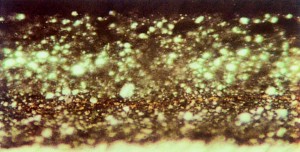 Diğer taraftan, sıcak daldırma gavaniz tabakanın böyle bir avantajı yoktur. Sıcak daldırma yüzeyinde sad ece çok az çinko tuzu oluşmaktadır.
Diğer taraftan, sıcak daldırma gavaniz tabakanın böyle bir avantajı yoktur. Sıcak daldırma yüzeyinde sad ece çok az çinko tuzu oluşmaktadır.
ZINGA, sıcak daldırma galvaniz yöntemi ile kıyaslandığında kalite ve güvenirlik açısından üstündür. ZINGA’nın korazyon hızı daha yavaştır. Dünyanın birçok yerindeki bağımsız laboratuvrlardan alına test raporları açıkça ZINGA’nın sıcak daldırma yöntemine kıyasla daha üstün olduğunu kanıtlamıştır. Rapor örnekleri istenildiği takdirde, memnuniyetle bilginize sunulabilir.
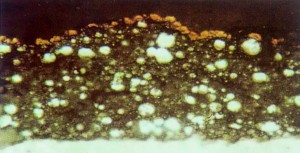 ZINGA ile sıcak daldırma yöntemini karşılaştırarak yıllık korazyon oranını belirlemek için ‘daldırma testi’
ZINGA ile sıcak daldırma yöntemini karşılaştırarak yıllık korazyon oranını belirlemek için ‘daldırma testi’
Bangladeş Mühendislik ve Teknoloji Üniversitesi (BUET) Bangladeş
Çeşitli örnek plakalarda uygulanan 2000 saatlik tuz spray testi
- Çinko zenginleştirilmiş boya
- ZINGA
- ZINGA + Alufer N – Metalizasyon
- Sıcak daldırma
Gent Eyalet Üniversitesi (RUG) Belçika
ZINGA ile sıcak daldırma yöntemini kıyaslamak maksadıyla şamandıralar üzerinde yapılan saha testi.
Direction Départmentale de 1’Equipment-Service Maritime de la Vendée Fransa
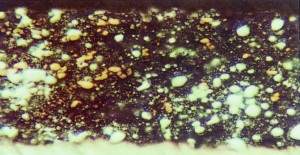 ZINGA ile sıcak daldırma yöntemini kıyaslıyan değişik testler.
ZINGA ile sıcak daldırma yöntemini kıyaslıyan değişik testler.
1) Tuz spray testi, 500 saat
2) UV-test ile aşındırma
Kuwait Institute for Scientific Research Kuveyt
ZINGA ile sıcak daldırma yöntemini kıyaslıyan 400 saatlik tuz spray testi
South African Bureau of Standards (SABS) Güney Afrika
Tuz spray testi, 7500 saatlik
- Sıcak daldırma
- Sıcak daldırma + ZINGA
- ZINGA
Chinese National Cheng Kung University (ACKU) Materials Corrosion Prevention Center Tayvan
ZINGA ile sıcak daldırma yöntemini kıyaslıyan elekrokimyasal testler
BNF Fulmer Research Center İngiltere
• Dubleks Sistem
ZINGA veya sıcak daldırma galvaniz gibi aktif galvanizleme sistemlerinin son katını boya
ile boyadığımızda buna dubleks sistem diyoruz.
Eğer sıcak daldırma uygulanmış yapılarda dubleks sistem istenirse, çeliğin özel pürüzlendirme prosesi ile hazırlanması gerekir. Son kat boyanın özellikle sıcak daldırma galvaniz için formüle edilmiş olması gerekir. Çünki herhangi bir boya tam yapışma sağlıyamaz.
Çinko ile spreylenmiş bir tabakaya özel hazırlık yapılmaksızın çok az boya uyum sağlar.
Böyle yüzeylerin gözenekliliğinden ötürü, 1. veya 2. bitiş katı uygulamadan önce 20 ila 40 μm kalınlığındaki kuru film ile stabilizasyon tabakası sürmek gerekir.
ZINGA bu konu ile de ilgili olarak daha iyi olduğunu kanıtlamıştır. Birçok uygun boya, ZINGA yüzeyinde herhangi özel hazırlık yapılmaksızın, doğrudan ZINGA üzerine sürülebilir. Birçok epoxy boya, poliüretan ve vinil boya ile özel geliştirilmiş mikalı demir oksit (MIO’s) ZINGA üzerinde uyum sağlar. Bütün bu son kat boyaları aynı üretici firmadan, yani Zingametall’den, temin edilebilir. İhtiyacınız olan, bir tek kontak kişi ile temasa geçmek ve bütün uygulamadan bu tek firmayı sorumlu tutmaktır. Son kat boyanın başka bir firmadan temin edilmesi durumunda, Zingametall üretici firmadan boyanın ZINGA ile uyumlu olduğuna dair yazılı konfirmasyon istemektedir.
Dublex sistem, ZINGA’nın ömrünü 2 kattan fazla uzatmaktadır. Dublex sistem ömrü (aktif + pasif) = 2.5 x (ZINGA + boya)
Aslında, ZINGA kendi başına dubleks sistemdir. Bitiş kaplaması istemez. ZINGA, yüzeyde çinko tuzlarının oluşmasıyla kendi bariyer korumasını meydana getirir.
• ZINGA mekanik zararlara karşı daha dirençlidir
Sıcak daldırma galvanizin bir diğer zayıf noktası da yüzeyde oluşan demir-çinko alaşımının altta bulunan ana metalden daha sert olması ve bunun sonucunda, galvanizlenmiş tabakanın tamamı kırılgan ve çatlamaya eğilimlidir. Düşük ısı ve yaşlanma etkileri, sıcak daldırma galvaniz tabakanın kırılganlığını arttırmaktadır
ZINGA kesinlikle kırılgan değildir. ZINGA tabakası esnek, sıkıştırılabilir ve hiçbir şekilde alttaki metalden daha sert degildir. Esnekliği sayesinde aşınmalara karşı çok yüksek rezistansa sahiptir. Mekanik hasarların etkisi karşısında ZINGA tabakası çatlamaz. Sadece ezilebilir veya sıkışabilir. Hatta ZINGA’ya kaynak yapmak da mümkündür.
• ZINGA yeniden canlandırılabilir
Metalizasyon tabakası veye sıcak daldırma galvaniz tabakası aynı yöntem ile tekrar yenilenemez. Diğer taraftan ZINGA tabakası, sadece üzerine yeni bir kat uygulanarak yeniden canlandırılabilir. Hatta ZINGA, metalizasyon tabakasını veya sıcak daldırma galvaniz tabakasını da canlandırabilir.
ZINGA ile yeniden canlandırma
• Eşsiz sistem olarak ZINGA
Zamanla, katodik korumanın etkisiyle ZINGA tabakasının kalınlığı yavaş yavaş azalmaktadır. Belirli bir zamanda yeni ZINGA tabakası uygulamak gerekecektir.
ZINGA’nın en önemli avantajı tekrar canlandırılabilmesidir. Her yeni ZINGA tabakası bir önceki tabakayı sıvı hale dönüştürür. Hatta ilk uygulamadan yıllar sonra bile bu geçerlidir. İlave edilen tabakalar bir öncekiler ile karışarak homojen, tek bir tabaka oluşturur. Yapısal olarak farklı tabakaların birikerek, soyulmaya sebep olma riski yoktur. Canlandırma işleminden önceki yüzey hazırlığı minimuma indirgenmiştir: sadece yüzeyi su ile temizlemek yeterlidir (Yüzey kirliliğine bağlı olarak düşük, yüksek veya aşırı yüksek basınçlı su ile).
Canlandırma özelliği, yüzeyde hala delme veya kaynak yapma işlemlerini gerçekleştirmemiz gerekse de uygulanabilir. Veya yapının başka bir yere nakledilmesi gerekse de gerçekleşririlebilir. Bu durumda ilk kat astar olarak kullanılır. Bu astar muhtemel hasarları da önler. Sonradan son kat ZINGA uygulanarak sınırlı sayıdaki hasarlar onarılabilir. Yüzeyin tamamının tekrar kaplanmasına gerek görülmediği durumlarda, hasarlı noktalara az miktarda ZINGA uygulayarak tekrar bütün yüzeyi paslanmaya karşı koruyabiliriz. Bir süre sonra onarılan kısımlar görünmez olacaktır.
• Sıcak daldırma galvaniz veya metalizasyondan ayrı olarak ZINGA
Metalizasyon veya sıcak daldırma yöntemi ile galvanizlenen yapılar bir süre sonra paslanmaya başlar. Bu gibi yıpranmış ve hasarlı yapılar ZINGA ile canlandırılabilirler. Galvanizlenecek yüzeyin kabartılması ve temizlenmesi gerekir. Bunun ardından ZINGA tabakasını uygulayabiliriz.
zinga boya alırken bizden teklif alınız
mehmet@ersanboyamarket.com
ERSAN BOYA KİM MAD SAN TİC LTD ŞTİ
Perpa ticaret merkezi B blok kat :5 no:223
şişli /okmeydanı/istanbul
tel :02122224639
fax:0212 2224651